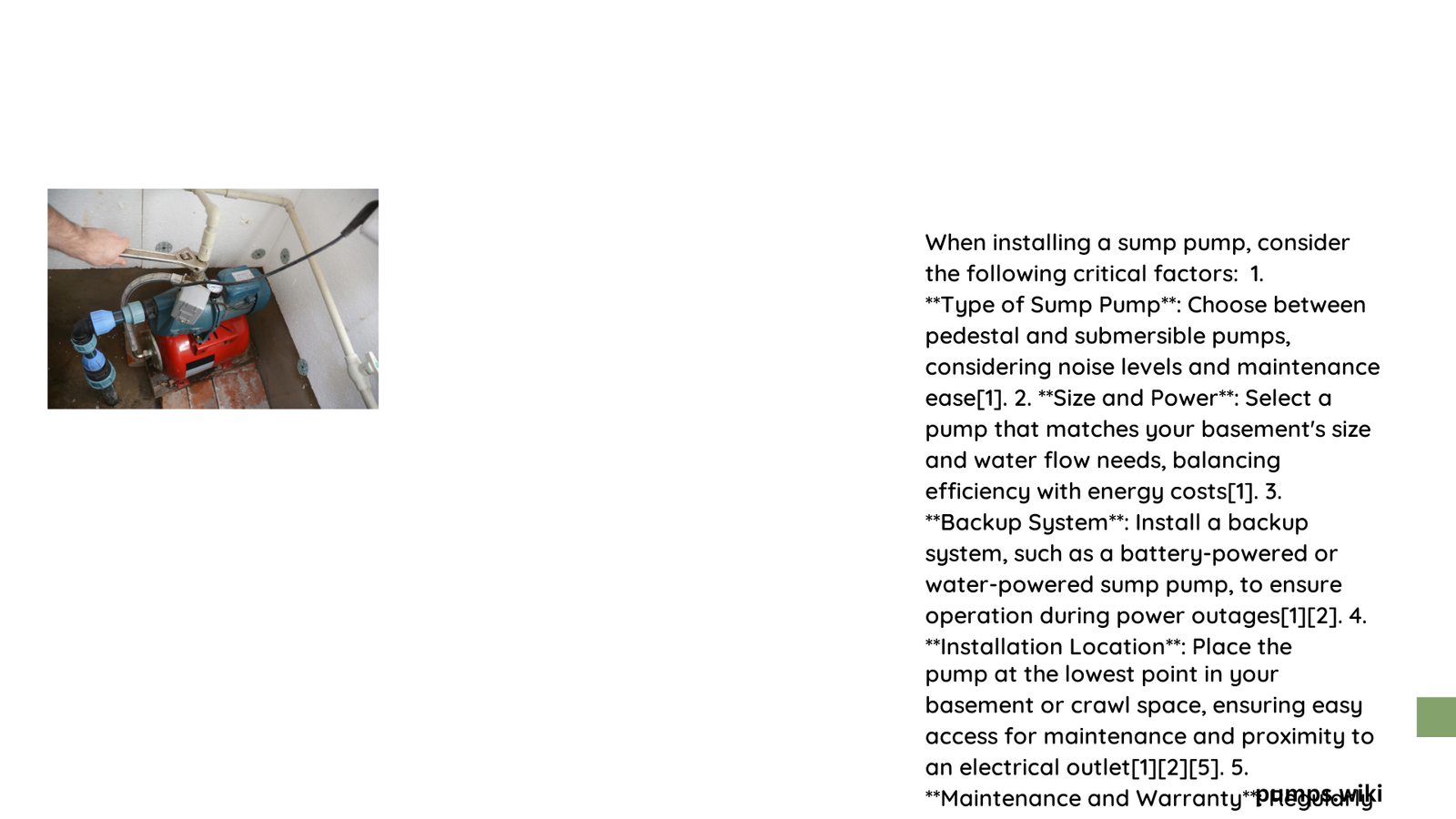Installing a sump pump requires careful planning and technical expertise to ensure effective water management and protection for your home’s foundation. Homeowners must consider multiple critical factors such as pit depth, power requirements, discharge location, and backup systems to create a reliable water drainage solution that prevents potential water damage and maintains structural integrity.
What Are the Critical Depth Requirements for Sump Pump Installation?
Proper sump pump installation begins with understanding critical depth specifications. The sump pit’s dimensions and depth play a crucial role in ensuring optimal pump performance.
Minimum Pit Specifications
- Depth Range: 12-22 inches recommended
- Width: Minimum 12-18 inches to accommodate pump and liner
- Concrete Base: 6-inch thick foundation recommended
| Pit Depth | Pump Type | Recommended Considerations |
|---|---|---|
| 12 inches | Pedestal | Limited float switch movement |
| 18 inches | Submersible | Optimal float switch operation |
| 22 inches | Advanced Models | Maximum water management |
Why Does Ground Condition Matter?
Ground conditions significantly impact sump pump installation. Different soil types require specific approaches:
- Clay Soils: Require enhanced drainage solutions
- Sandy Soils: Better natural water percolation
- Rocky Terrain: May need additional excavation
How Do You Select the Optimal Discharge Location?

Selecting an appropriate discharge location prevents water accumulation and potential foundation damage.
Key Discharge Considerations
- Distance from House: Minimum 10-15 feet
- Slope Gradient: 1/4 inch per foot downward
- Avoid Neighboring Properties
- Prevent Water Pooling
What Power Source Specifications Are Essential?
Electrical requirements are critical for reliable sump pump operation.
Electrical Parameters
- Standard Voltage: 120V or 240V
- Amperage Range: 5-10 amps
- Circuit Protection: GFCI-protected outlet
- Backup Power Options: Generator compatibility
How Can You Implement a Reliable Backup System?
A robust backup system ensures continuous water management during power interruptions.
Backup System Components
- Battery Capacity: 40-75 amp-hours
- Automatic Charging Mechanism
- Regular Maintenance Schedule
What Are Maintenance Best Practices?
Consistent maintenance prevents unexpected failures and extends pump lifespan.
Maintenance Checklist
- Annual professional inspection
- Clean pit and remove debris
- Test backup battery system
- Verify float switch functionality
- Inspect discharge pipe for blockages
What Are Potential Installation Challenges?
Understanding potential challenges helps prevent future complications:
- Water Table Fluctuations
- Soil Drainage Characteristics
- Local Building Codes
- Seasonal Weather Variations
Conclusion
Successful sump pump installation requires comprehensive planning, technical knowledge, and attention to multiple critical factors. Homeowners should prioritize professional consultation to ensure optimal water management and protection.
